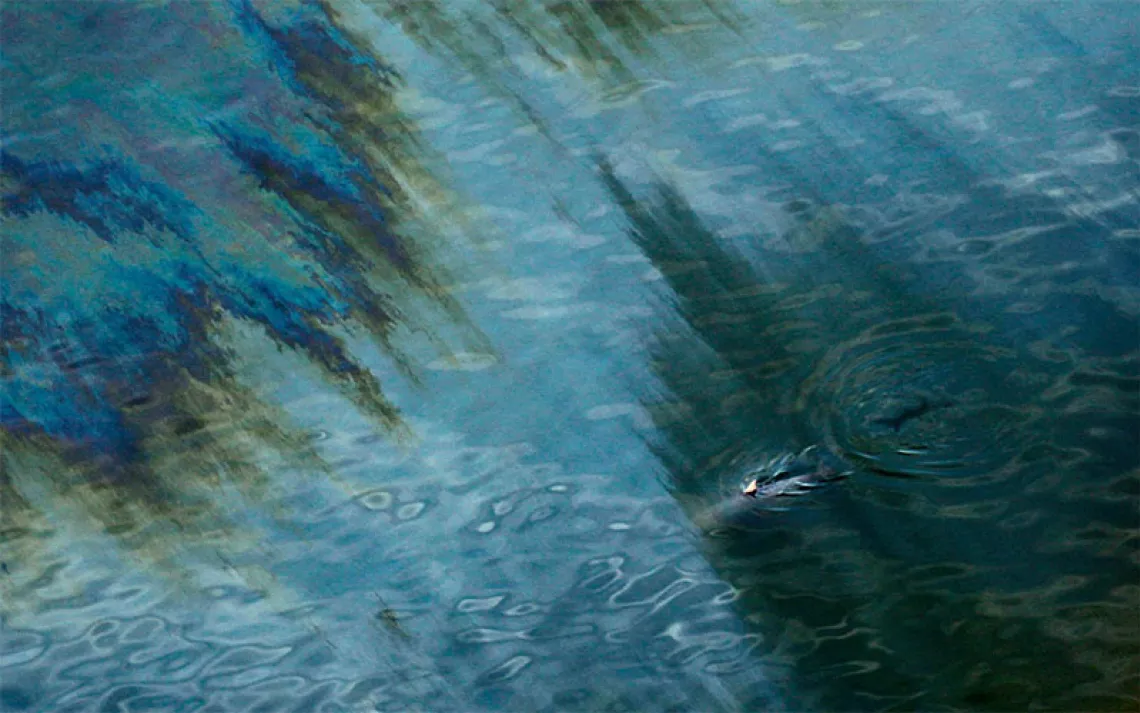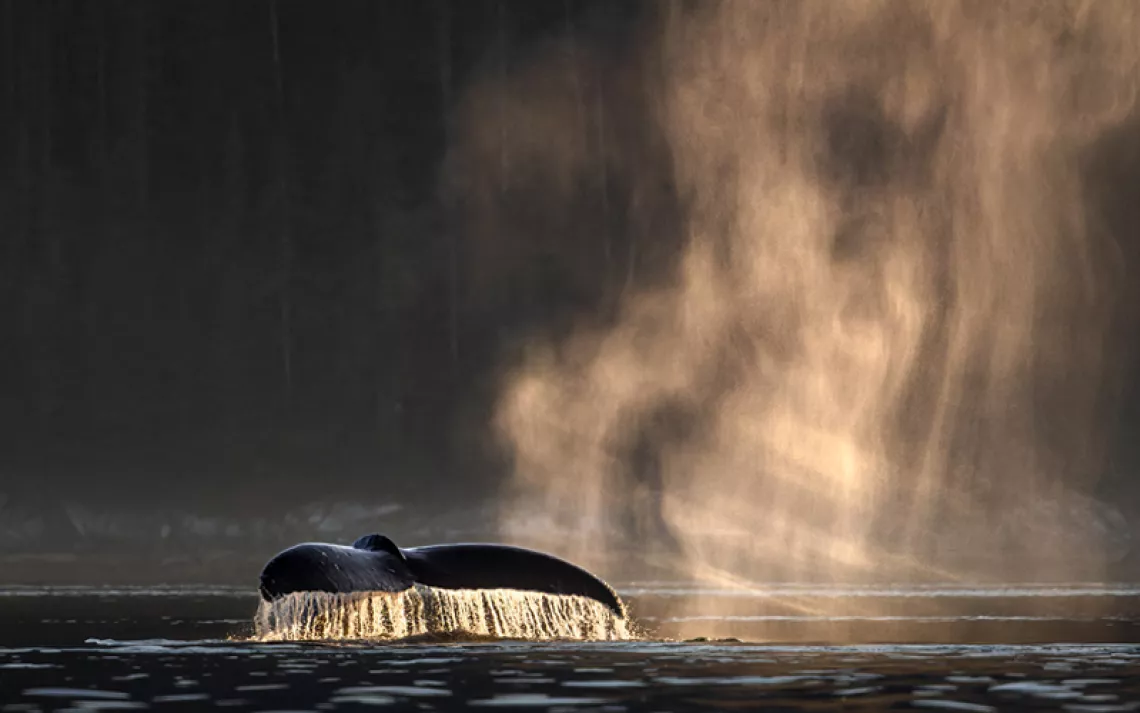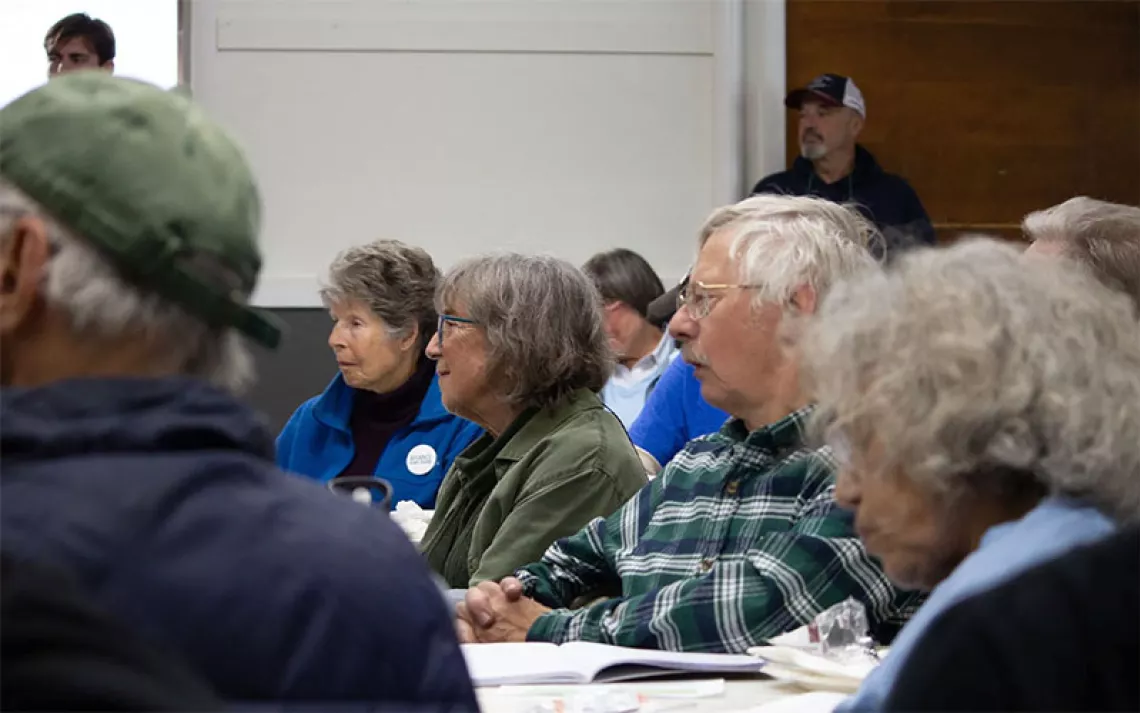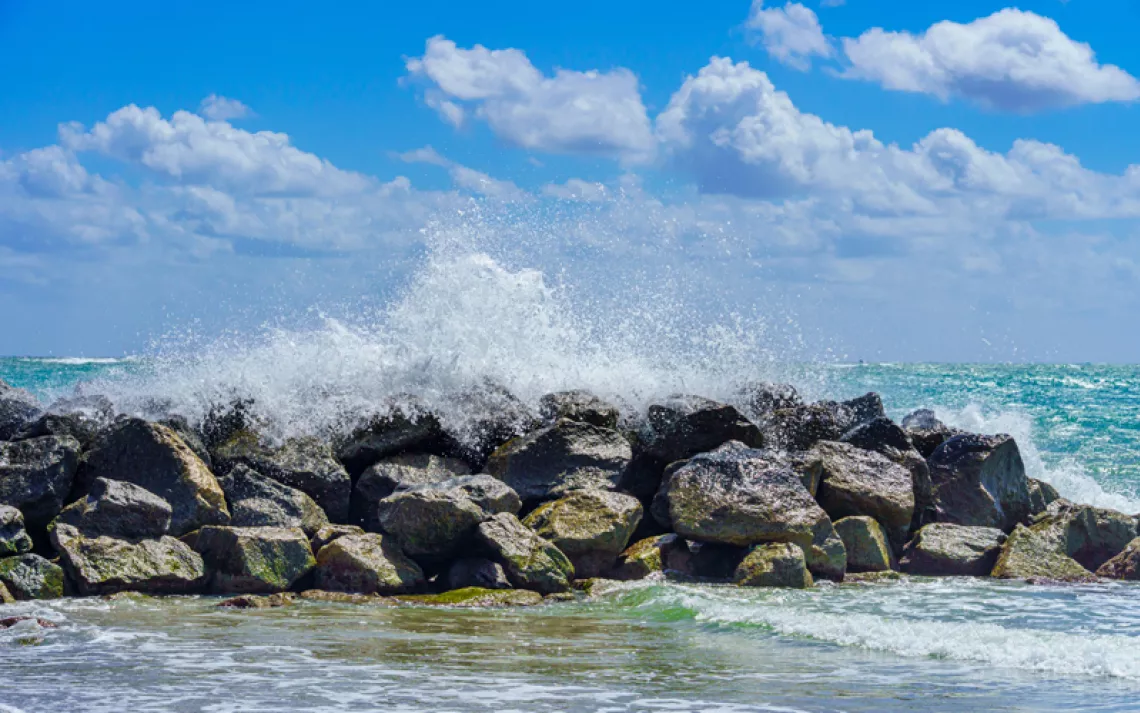Where Compassion and Conservation Meet
Marine biologists are claiming compassionate conservation as a new ethos
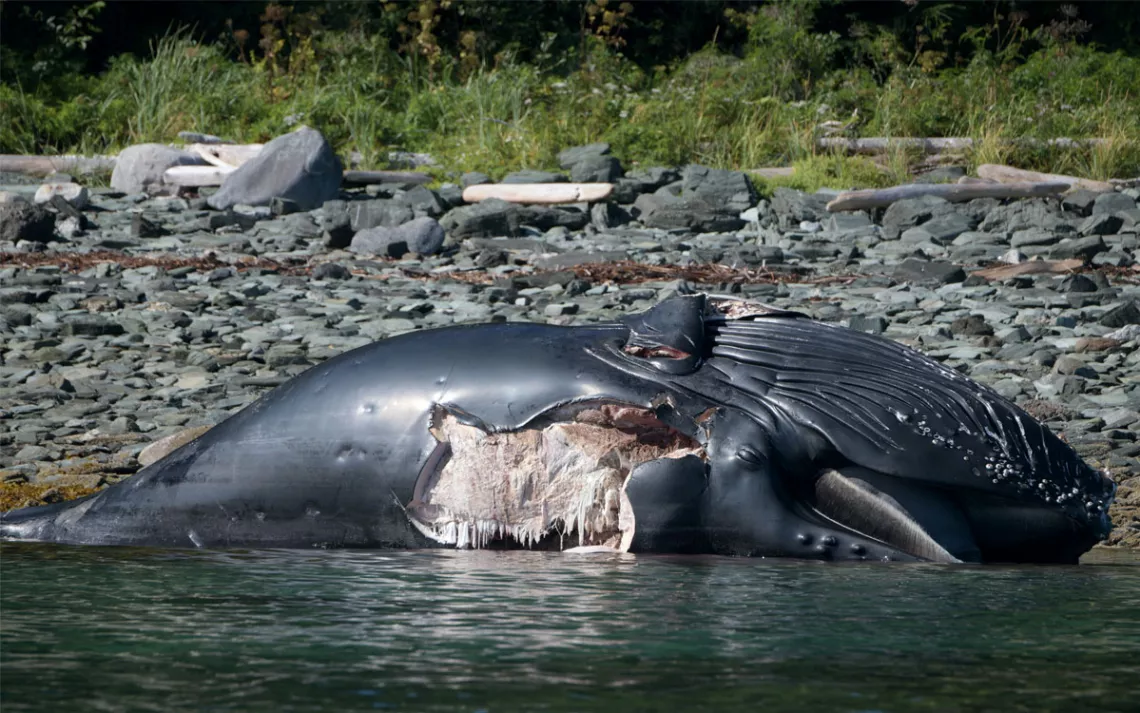
Tango, a humpback whale calf, was killed by a ship strike off Juneau, Alaska. | Photo by Heidi Pearson
For 13 years, marine biologist Heidi Pearson has spent her summer weekends aboard a research vessel near her home in Juneau, Alaska—a long-lens, rapid-fire camera at the ready. The Iowa-born professor keeps tabs on humpback whales returning to their feeding grounds from Hawai‘i and Mexico. Her computer contains thousands of images of giant, dripping tails set against the backdrop of Sitka spruce and hemlock trees ringing Southeast Alaska’s bays.
Last summer, Pearson took pictures of things she didn’t want to see. A whale calf named Tango was swimming alongside his mother with bloody lacerations on his back from a ship strike. An adult named Manu was tangled in a crab pot. She spotted Herbert, another calf, trailing a jumble of twisted rope, making it hard for him to swim. Then, in August, Tango was struck again by a boat. His body washed up on a beach two days later with gruesome damage to his flank from the ship’s prow.
Pearson photographed Tango’s mother, Sasha, shortly after her calf’s death, feeding in her usual spots alone. “This summer has been a hard time to be a whale researcher in Juneau,” Pearson said at the time.
That expression of compassion reflects an ethos that some biologists are identifying as essential to their work. Known as compassionate conservation, the approach has a simple premise: It’s just as important to protect and live harmoniously with individual animals as it is to prevent the extinction of their species.
Compassionate conservation is not a new methodology, but it does differ from the established wisdom that drives most conservation efforts, according to Arian Wallach, an ecologist at Queensland University of Technology in Australia. Traditional conservation is focused on preventing extinction. If a species is not in danger, the thinking goes, then all is well. But for scientists like Wallach and Pearson, the well-being of individual animals, not just their species, is equally important. They argue that our ability to successfully protect a species hinges in part on our capacity to understand, relate to, and know individual animals and their stories. Humans, Wallach said, are naturally empathetic creatures. If we focus that empathy on the animals we study, we’ll learn more about their species and how to protect them.
This is not just sentimentality. Personal knowledge of particular whales, Pearson said, is essential to the study of behavioral ecology. Researchers need data on how a whale responds to its environment over time. After all, natural selection works at the individual level. Camera-trap images, cellphone videos, and GPS data from around the world make it easier to tune in to the lived experience of individual animals.
In addition to tracking humpbacks’ movements and behaviors, Pearson looks for underweight whales with their shoulder blades poking out. Climate change is altering the behavior and biology of prey, making it harder for whales to find the herring and krill that make up their diet. That’s one possible reason there’s been a spate of recent whale deaths up and down the Pacific coast.
Lawful commercial whaling ended with the International Whaling Commission (IWC) ban in 1986. But despite the ban and the decades of public affection showered on whales, humans have not stopped killing them. Ship strikes, fishing-gear entanglements, and noise pollution take the lives of thousands of marine mammals annually. Ropes and plastic webbing can tangle up and weigh down a whale to the point where it drowns or starves. The IWC estimates that fishing gear and other marine debris kill 300,000 whales and dolphins each year. As many as 20,000 are killed in collisions with boats.
These numbers are big enough to alarm conservationists looking for species abundance. It doesn’t take many deaths to drive highly endangered species like the North Atlantic right whale toward extinction. Every death matters when there are fewer than 350 of the species left in existence.
Humpbacks typically live for half a century. The oldest of the charismatic giants reach more than 80 years. Since humpbacks return to the same feeding grounds each year, scientists like Pearson come to know the whales personally. Some researchers in Glacier Bay have followed the same individuals for 40 years. The return of humpbacks after their journey—more than 5,000 miles round-trip—creates a sense of high anticipation in Southeast Alaska’s research community. Which whales will make it back this year? Which will have a calf in tow?
After more than a decade chronicling Juneau’s whales, Pearson finds it impossible not to feel connected to them. “Good science,” she said, “has to start with individual whales.”
For scientists like Pearson and Wallach, these individuals matter, and ought to inform changes in policy. A drowning or a traumatic injury is a horrible fate. We have rules and norms that prevent people from getting hit by cars, Wallach said. Speed limits are enforced, and traffic-calming structures are built into city streets. Compassionate conservationists argue that we should take similar measures for our wildlife kin.
An alliance of businesses, local governments, and community organizations in Alaska has introduced a series of recommendations this year to do just that, including encouraging tour operators to avoid overcrowding whales near Juneau. The National Oceanographic and Atmospheric Administration has issued its own voluntary guidelines for keeping whales safe.
As for the whales Pearson was tracking last summer, Herbert was able to shed his ropes, and a tracking device attached to the fishing net in which Manu was draped eventually floated to the surface, suggesting he was free. Pearson lives for those moments. “I had a great sense of relief,” she said.
Having spent years getting to know these two whales, Pearson can now celebrate them as living free once more. “They don’t have a voice in a lot of what’s happened to them,” Pearson said. “I feel a responsibility to understand them and to work for their protection.”
 The Magazine of The Sierra Club
The Magazine of The Sierra Club
